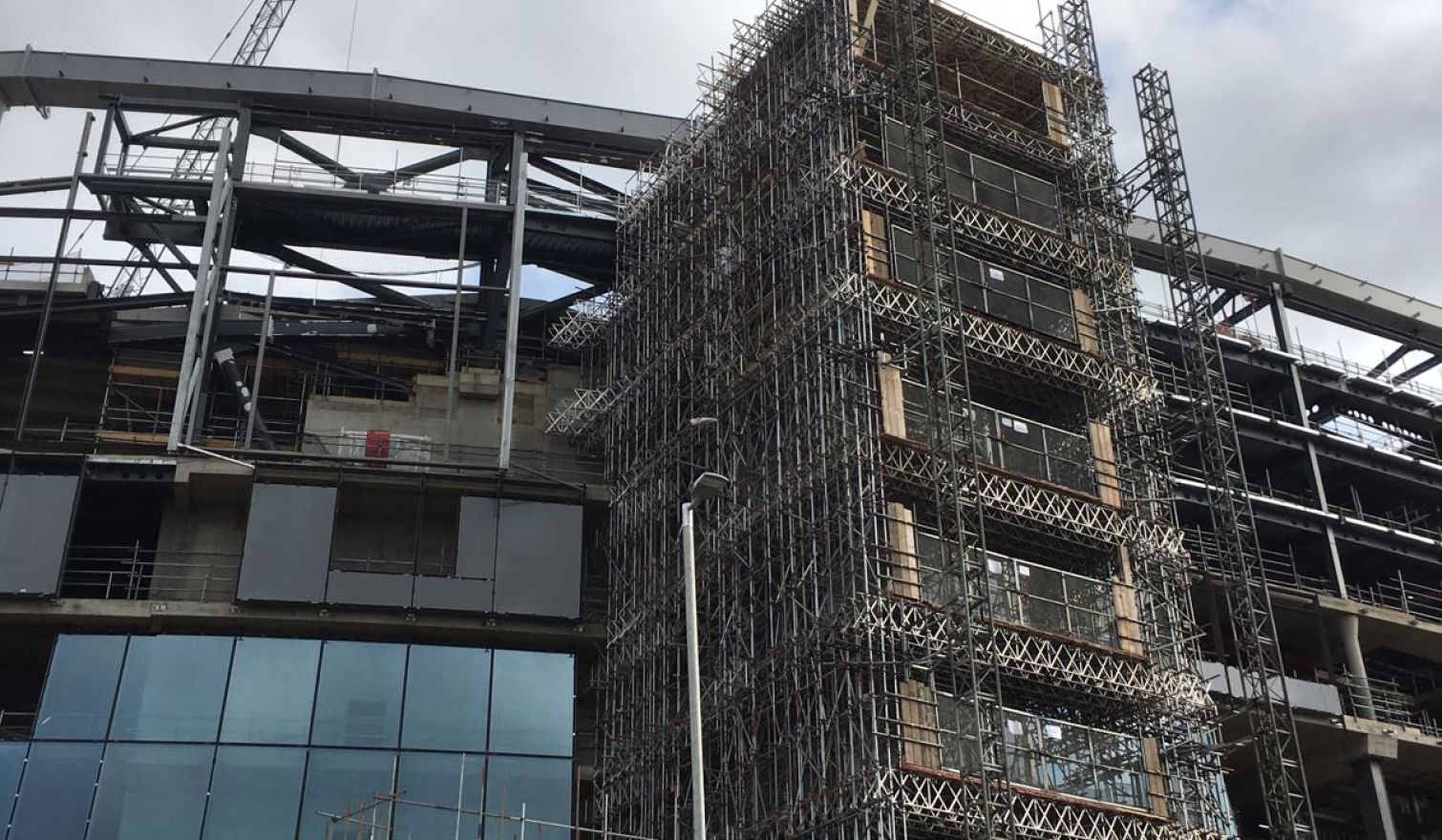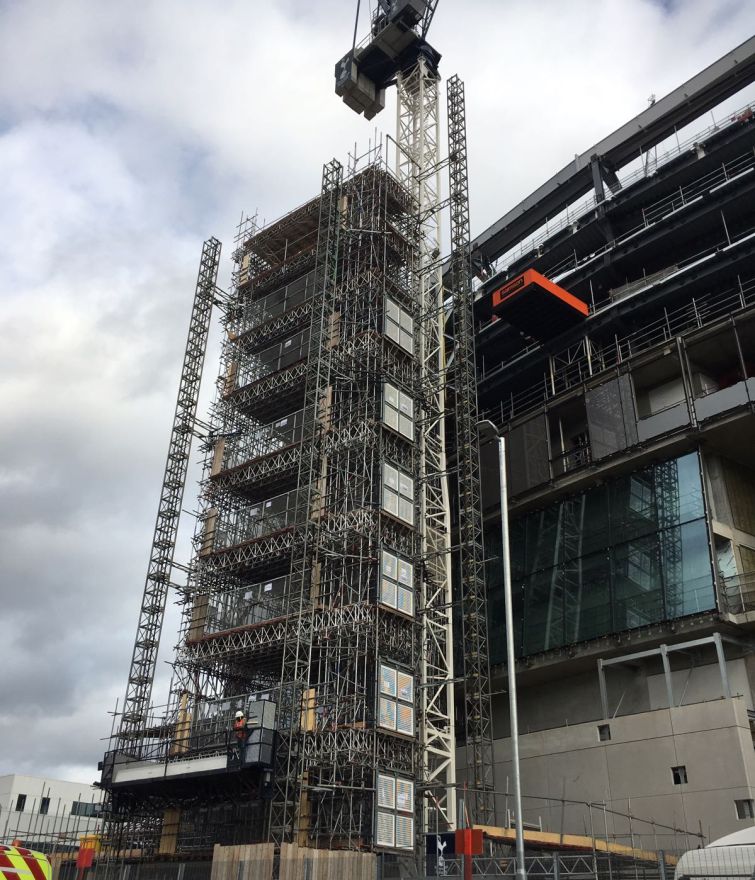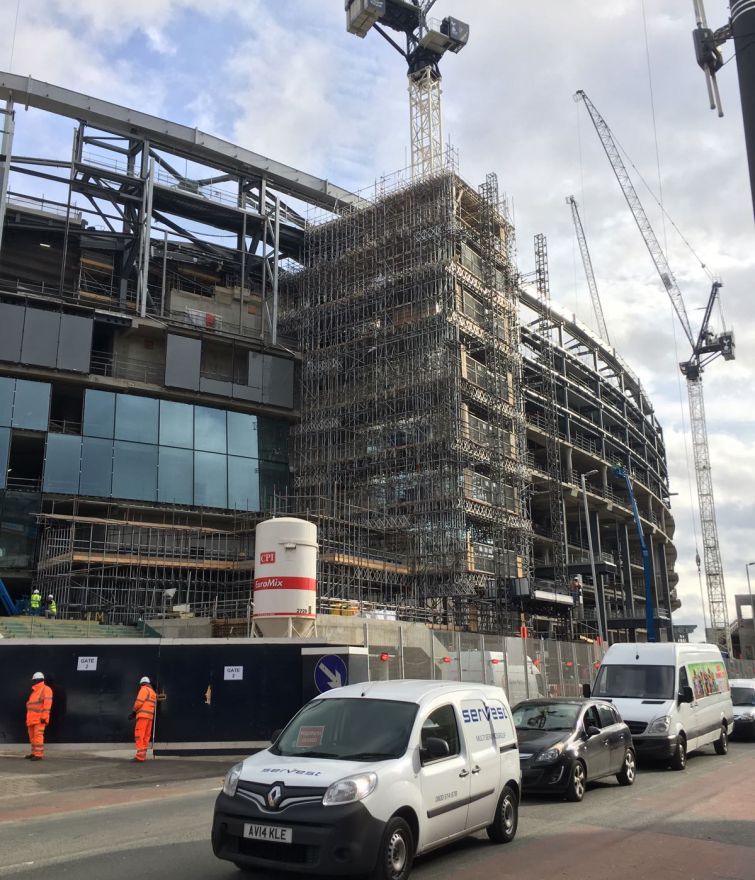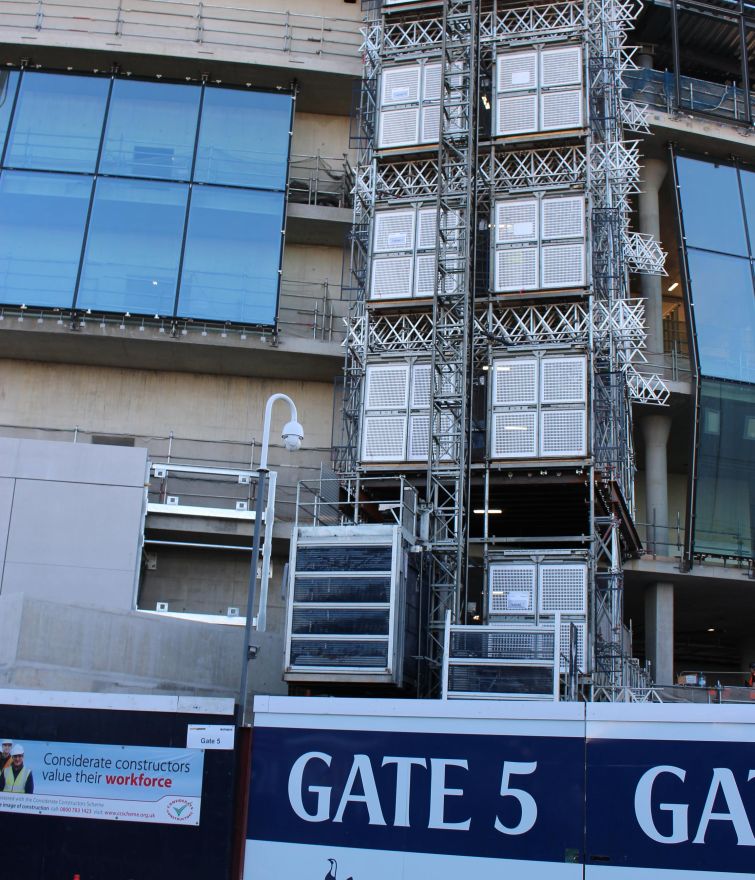New Stadium - Tottenham Hotspur Football Club
Hoist Run-Off Scaffolds
The Brief
Northumberland Park in North London is the new football stadium built for Tottenham Hotspur F.C. It was designed by architect Populous and constructed by MACE.
The development was one of the biggest in London during construction and the site of many high-profile scaffold designs completed by 48.3 on behalf of scaffolding contractor GKR. In total 48.3 delivered over 250 scaffold and temporary works solutions on the project. The scaffold designs included multi-level hoist run-off scaffolds, support and rigging scaffolds for roof cable installation, concrete foundation design as well as an array of public access solutions to keep fans safe on match days.
In order to service this massive development, 48.3 had a dedicated on-site design team working alongside GKR and MACE, with support from up to eight additional design engineers at times of peak demand.
48.3 provided design input for ten hoist locations initially of which six became full working schemes and were built on site. Three of the hoist run-off scaffolds provided direct access from the external scaffold into the stadium.

The Work
The scale of this development and vast array of contractors requiring multilevel access resulted in a series of complex hoist run-off scaffolds. The scaffolds each had to meet logistical requirements both internally and externally at ground level. Space was tight, and many aspects of temporary works in surrounding areas had to be considered as well as programme and how the hoist’s presence interfaced with other trades.
The load capacity of the hoists differed from 10kN/m² to 20kN/m2 (one and two tonnes respectively) with the resultant point loads from pallet trucks being considerable. Some required one hoist to be tied directly to the scaffold whilst other scaffolds provided lateral restraint to 2 hoists.
The set-out and configuration of the hoist run-off scaffold was one of the first challenges to overcome. The radial curvature of the stadium and ever-changing slab profile resulted in a different support arrangement at each level.
Understanding programme and build sequence was important in ensuring that the hoist had limited interference with other trades. Thought was given to the façade and podiums which had yet to be installed.
The logistics at ground level were tight, with primary access routes running around and under the scaffold. Headroom was a specific consideration where plant and operatives passed under and through the hoist run-off scaffold. One hoist position was directly adjacent to a tower crane, the sway of which had to be accommodated as two sides of the mast were surrounded by scaffolding.
The final challenge was in configuring each lift of the scaffold. Where two twin-cab hoists where fixed to the scaffold at 90-degree angles to each other, the access route through each platform was critical. The positioning of support towers, beams and bracing could not obstruct the hoist gates or access routes, whilst still supporting the high imposed loads from both the in-use condition of each platform, and the dynamic tie loads of the hoist.



The Result
Placement and configuration was achieved through a close working relationship between the MACE temporary works team, GKR site management and 48.3. Many options and configurations were designed, discussed and updated in a continuous cycle of collaboration until we reached a final solution that met the needs of the various trades, programme demands, logistics, erection methodology and structural performance.
‘Hoist 2’ was based 2.0m from the face of the slab up to L02 allowing clear access to the façade for cladding and glazing contractors to complete their works on programme. This was achieved through a bespoke support arrangement which allowed for the inside line of scaffold to be suspended at multiple levels from the stadium core wall.
‘Hoist 5’ was located directly above one of the stadiums podiums which was yet to be built. The scaffold incorporated a removable platform to allow trades to service L01 up until the podium build date, whilst maintaining full access to other levels throughout the remainder of the project.
One hoist and the adjacent scaffold were located on top of an attenuation tank, so a concrete base design was provided to effectively distribute the load from the hoist and scaffold over the tank, manage the bearing pressures created and prevent any damage to the tank.
At each hoist run-off level, we completed a swept path analysis for the largest items to be brought up in the hoist. The tower crane mast was modelled and the maximum sway at each level of the run-off considered ensuring we did not encroach. This ensured that each level gave enough access and clearance from each hoist, for all materials. The challenge for the scaffolders, was erecting complex, non-uniform beam and bracing configurations, in very tight layouts at each level. The collaborative approach between 48.3 and GKR to both creating the solution, and delivering the solution was crucial in the successful installation of this structure.